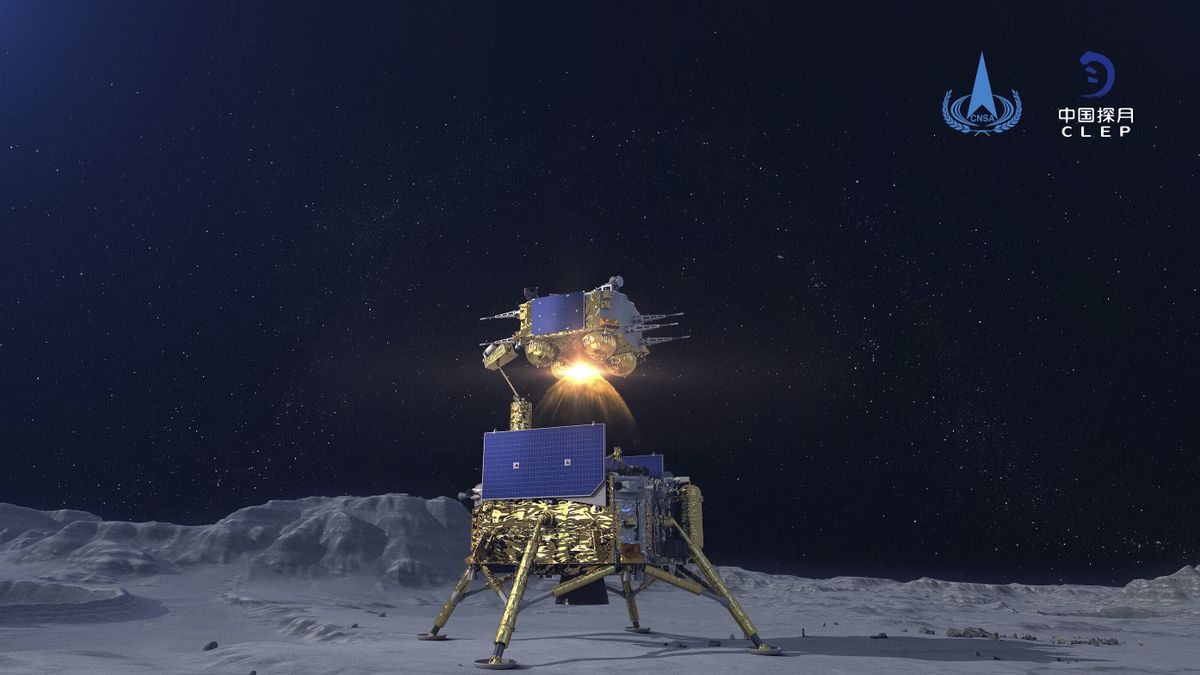JAKARTA - China's Chang'e-5 spacecraft has succeeded in bringing new material from the Moon rocks to Earth. Through the space capsule, China sends sediment and rocks captured from the Moon.
The space capsule landed in Mongolia, early Thursday 17 December. For China, these samples prove that their country can carry out geological research independently, since the last missions of the US Apollo and Luna of the Soviet Union 40 years ago.
China has poured billions of dollars into its space program. For China, the successful Chang'e-5 space mission is seen as another demonstration of the country's growing capabilities in space.
The Chang'e-5 spacecraft itself is still in charge of shooting and exploring the Moon. This includes mapping the conditions under the Moon's surface to find out the mineral and water content.
Of course, China will not miss a new sample of lunar material. They immediately carried out research to find out the history of the formation of the Solar System, by calibrating the "chronometer" on the Earth's surface.
Given the samples brought to Earth are very old material and are estimated to be more than three billion years. Scientists also hope the samples will help them learn about the origin of the Moon, how it formed, and the various volcanic activity on its surface.
The Nature science journal page explains that the Chang'e-5 mission was carried out in an area of the Moon known as Oceanus Procellarum or Ocean of Storms. It is a vast lava plain that has never been explored before by humans.
The pride of the President of China, Xi JinpingWith the success of this space mission, various praises have come to China from the public to scientists, even President Xi Jinping also proudly congratulated the success of the Chang'e 5 space mission.
"As the most complex space project in China, the Chang'e 5 mission marks a major step forward for the Chinese space industry and will contribute to deepening understanding of the origin of the moon and the evolutionary history of the solar system," Xi Jinping said as quoted by the South China Morning Post.
Xi Jinping said space exploration knows no boundaries and called for new interplanetary exploration to turn China into a major power in outer space.
He hopes the research will also realize the peaceful use of space. The fifth mission of this Moon exploration program was launched from the Wenchang Space Shuttle Launch Site on the southern island of Hainan on November 24, 2020.
China's Next Mission2 of 5: Chang'e 5: China says it will share its lunar samples with the global scientific community https://t.co/2Jq95rVsHM
- SCMP News (@SCMPNews) December 17, 2020
Likewise with NASA, after successfully bringing the Moon's rocks and soil back to Earth, China will also create a manned space station in 2022 on the Moon. After that, they will send humans to the Moon for further exploration.
Previously it was known that China had also brought three spacecraft to the Chinese Tianwen-1 Mission to Mars in July. The three vehicles are an orbiter, lander and rover. The spacecraft orbits Mars before landing the rover on the surface.
Unlike the Arabs, China's mission to Mars is to launch orbiter satellites in the Martian atmosphere and land landers and rovers on the mainland. The Tianwen-1 mission is China's first mission to Mars.
The mission, which means "The Search for Heavenly Truth" is taken from classical Chinese poetry that questions the universe. None other than, this mission aims to collect data about the soil, geological structure, atmosphere, and signs of water on Mars.
The English, Chinese, Japanese, Arabic, and French versions are automatically generated by the AI. So there may still be inaccuracies in translating, please always see Indonesian as our main language. (system supported by DigitalSiber.id)













